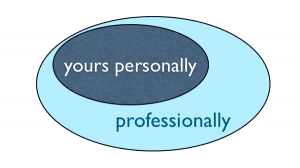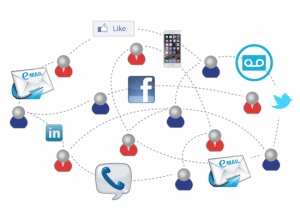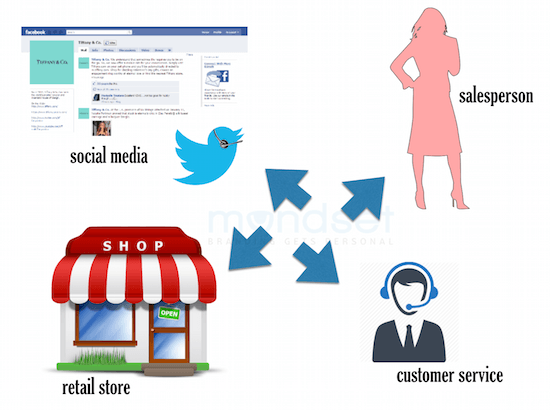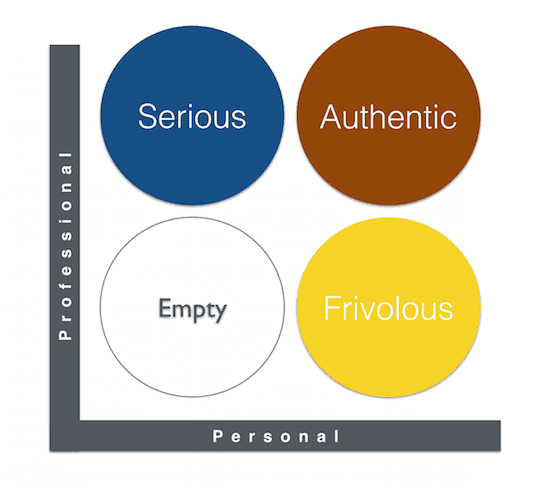
Merging the Personal & Professional
In 2010, I wrote for the first time about what it means when Branding Gets Personal. Some companies and cultures prefer to keep what is personal at home and to keep everything at all professional and all business. Evermore, however, I believe that brands need to find ways to bridge the professional and personal Rubicon. Yes, we need to strive for better and not be afraid to succeed and gain more profit. But, if your brand wants to win out over the long-term, it must find ways to be more expressive. By getting personal, brands not only become more engaging, they take advantage of the full potential of the people that make up and deliver the brand. There are 4 main reasons why I believe this is the case:
- The customer expects a value-added experience. That experience — in measured doses according to the segment of the market — involves many sequences before and after the act of purchase.
- There’s a battle for great talent and by allowing employees to flourish and develop, they will be more fulfilled, more curious, more ready to go the extra length.
- The experience of a brand — thanks to the proliferation of digital tools, devices and platforms — is delivered now at many more points of contact, over a longer period of time and by a larger number of individuals. Each of these interactions are unique moments of truth that form a part of the total brand experience.
- A brand that is personal allows for imperfection Share on X Really, at the end of the day, nobody wants or expects a perfect person. Sure, in some areas, there is no margin for error (safety, aeronautics, health…). But, for the rest, we go to a concert exactly to experience the imperfections, we travel to visit the differences, we dance to feel our body move, and we dive into the ocean to explore the unknown.
It is for these reasons (and, I avow, there are a few others) that branding must incorporate a more personal — less mechanized — touch, to empower its employees to embody the brand and bring it alive in each of the unique moments of truth.
Branding gets personal through many persons

A brand that is personal is one that allows for the personification of the brand throughout the various points of contact. In today’s omnichannel world, these points of contact are digital and analogue and are operated by different parts of the organization. The real challenge for organizations is to find that balance between process and personality? Share on X How to make sure that fairness is mixed in with appropriate flexibility? Because there is no amount of artificial intelligence able to anticipate and “program” all the right answers for every situation.
The four cornerstones of personal contact
In today’s wired world, there are at least four functions that are in constant contact with customers. The mix, intensity and purpose differ, of course, according to the segment and industry. There is, as ever, the retail store where store staff meet and manage customers. There is customer service (that can also serve as tele-sales) that typically operates via some mix of phone, letter, email and social media. There are salespeople who are on the road, visiting points of sale. In the schema below, this “employee” is a bucket, representing many other functions that visit customers, such as senior executives on a field visit, educators (e.g. for salon professionals), technicians (for repairs), deliveries… And, last but not least, the brand’s presence on social media.

Whereas many companies prefer to “rationalize” the discourse with what might otherwise be called red tape, approval matrices and mechanical processes (that can be outsourced or even programmed), the real brand experience happens in the gaps. That’s to say, the experience will be made or broken in between the research and the intention to purchase, between intention and the act of purchasing, after purchasing… And, it becomes all the more acute when there is an anomaly. Especially as the intended value of the offer rises (i.e. toward premium or luxury positioning), the need to craft exceptional moments is where the difference (and the positive word of mouth) will happen. Sure, the product must be excellent. But, it's in the foibles, exceptions and moments of humanity that real and memorable connections are forged Share on X
Charting your brand personality
Using this matrix below, where do you think the big money is? The Professional axis is a proxy for having a good product, delivering on your word. The Personal axis is proxy for the emotion that a brand procures. The ideal in terms of generating a strong, profitable and durable brand is when you marry both the professional and personal.

Your thoughts? Happy to hear your comments and feedback!











Trackbacks/Pingbacks